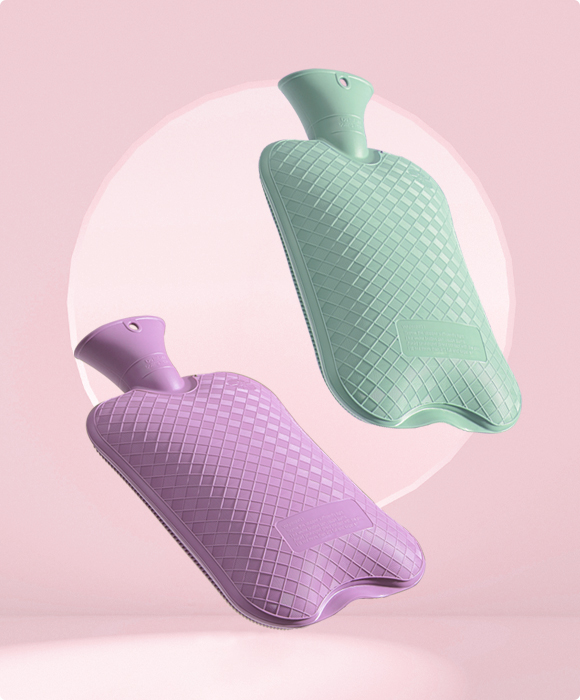
1.Introduction
2.How Does a Warm Compress Work?
3.When to Use a Warm Compress for Swelling
4.Benefits of Using a Warm Compress for Swelling
5.How to Apply a Warm Compress Correctly
6.Precautions and Contraindications
7.Alternatives to Warm Compress Therapy
8.Conclusion
Introduction
Swelling as a standard physiological body reaction that occurs in situations of injury as well as infection and inflammation. Excess fluid buildup in tissues results in pain that also causes discomfort in patients. An effective remedy for swelling exists through the application of warm compresses. What specific mechanisms trigger by applying heat to reduce swelling in affected areas? This blog analyzes the benefits of warm compress and its working principles while presenting optimal techniques to reduce swelling efficiently.
How Does a Warm Compress Work?
When treating swelling with a warm compress you should use either a heated pad or hot water bottle or a cloth saturated with warm water to apply heat to the swollen area. The application of warmth helps to
1.When heat touches the body it enlarges the blood vessels through vasodilation. Increased blood flow through this method helps eliminate waste materials while delivering vital oxygenated nutrients toward the recovery zone.
2.When heat triggers the lymphatic system it drains fluids from body tissues which reduces swelling together with the associated pain.
3.Swelling gets worse from tension in muscles that surround the affected area. After application of heat to muscles your body releases tension which reduces stiffness and associated discomfort.
4.Heat exposure causes an improvement in enzymatic functions that facilitate both inflammatory substance breakdown and tissue repair processes.

When to Use a Warm Compress for Swelling
Warm compresses serve an important purpose for swelling but they should not be used on all types of swelling. People need to understand the difference between swelling that is acute and swelling that is chronic.
Cold compresses receive preference for acute injury swelling during the initial 24-48 hours period because they reduce blood vessel dilation which controls initial tissue inflammation. You should apply a warm compress after this initial healing time to help blood circulation but before using it.
A warm compress brings relief to patients experiencing chronic swelling and those suffering from arthritis and poor circulation symptoms or muscle soreness or lymphedema.
A warm compress accurately reduces infection-related swelling when used to help infection-resolving white blood cells while promoting purulent material drainage from boils or abscesses.
Benefits of Using a Warm Compress for Swelling
1.Pain Relief
The swollen condition typically produces discomfort and pain as a result. A compress releases warm heat that calms nerve terminations to make the affected area more comfortable through reduced pain reaction.
2.Faster Healing
The heat from compressions improves blood flow which delivers oxygen necessary for tissue recovery. A warm compress assists in the detoxification process by removing toxins together with metabolic waste from swollen parts to speed up the healing process.
3.Increased Flexibility and Mobility
A warm compress helps arthritis patients and other individuals with joint swelling to reduce stiffness and improve movement capabilities during healing.
4.Enhanced Immune Response
The application of warm compress leads to immune cell activation within the body allowing it to combat infections and reduce inflammation while improving body defense mechanisms.
How to Apply a Warm Compress Correctly
People can damage their skin with improper warm compress use at the same time as they risk making their inflammation worse. The correct application process includes following these safety protocols
1.The right heat source consists of using a warm damp cloth microwaveable heat packs or electric heating pads. Heat should be kept at a safe temperature between 104–113°F (40–45°C) which is equivalent to warm but not scalding temperatures.
2.Heating should last for 15 to 20 minutes but the sessions need to divide into separate applications. Excessive heat usage will cause body tissue injury as well as fluid buildup within tissues.
3.A thin towel should separate heat sources including heating pads and heat packs from your skin in order to prevent burns.
4.The use of warm compresses is appropriate for multiple daily sessions depending on the level of swelling with scheduled breaks for each application.
5.Warm compress should never be applied to skin with damage or infections except when doing so with medical advice.
Precautions and Contraindications
Warm compresses normally present no major risks yet individuals should exercise caution during specific situations. It is unsafe to use warm compress right after an injury since it may increase swelling amounts. People who experience poor sensation because of diabetes or neuropathy or vascular diseases need health professional advice before applying warm compress because their ability to feel burns or negative effects may be impaired. Warm compresses promote drainage in localized infections but medics should evaluate cases of deep or systemic infections before allowing their use.
Alternatives to Warm Compress Therapy
In case, warm compress therapy proves ineffective then alternative treatments exist to manage swelling.
Cold Compress: Reduces inflammation and numbs pain, particularly for acute injuries.
Supporting swelling reduction comes from wearing elastic bandages and compression garments which stop fluid accumulation in the affected area.
The swelling area should stay at a position higher than heart level to help fluid drain out.
Development of swelling can be prevented through sufficient hydration combined with reduced dietary salt consumption.
Gentle massage methods based on lymphatic drainage techniques help patients experience reduced swelling.
Conclusion
A warm compress proves to be an effective natural treatment for swelling as long as healthcare providers guide proper application techniques. Warm compress provides valuable support for swelling management through its benefits for circulation and healing process together with pain relief for short-term and long-lasting swelling conditions. For optimal results one should learn the correct usage of warm compresses but also understand their limitations. Medical assistance should always be sought when swelling does not improve or gets worse.

